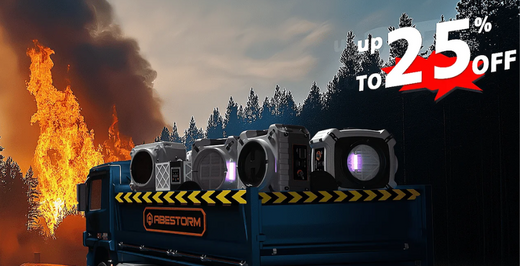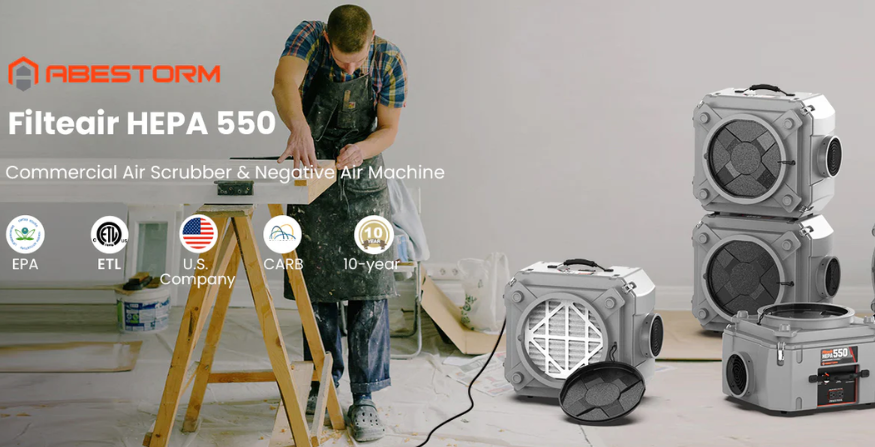A dehumidifier is an essential appliance designed to maintain optimal humidity levels in your home, preventing the damaging effects of excess moisture. How do you know if you need a dehumidifier? There are often subtle signs that indicate rising humidity levels that you may not notice until faced with visible signs like mold and mildew. Identifying these signs early can save you from costly repairs and potential health risks. This article outlines eleven hidden indicators that you might need a dehumidifier, to help you maintain a healthier and more comfortable living environment.
1. Condensation on Windows and Mirrors
If you notice frequent condensation on windows and mirrors, it could be a sign of high indoor humidity. This phenomenon occurs when warm, moist air comes into contact with cooler surfaces, causing the moisture in the air to condense. While occasional condensation might seem harmless, persistent foggy or wet surfaces suggest that your home is holding too much moisture, which can lead to other problems.
2. Water Stains on Walls and Ceilings
Water stains are often the first visible sign of moisture problems in a home. These stains appear as discolored patches on walls and ceilings, often in shades of brown or yellow. They can indicate a leak or high humidity levels that have led to moisture buildup. Left untreated, these watermarks can cause significant structural damage, weakening walls, and promoting mold growth.
3. Peeling Paint or Wallpaper
Excess moisture can wreak havoc on your home's interior finishes. Paint and wallpaper are particularly vulnerable to high humidity, which can cause them to blister, peel, or separate from the walls. If you notice these signs, your home’s humidity levels are likely too high, and a dehumidifier may be necessary to protect your surfaces and maintain their appearance.
4. Mold and Mildew Growth
Mold and mildew thrive in damp, humid environments. Common areas for mold to appear include bathrooms, kitchens, basements, and around windows. Mold is unsightly, and can pose serious health risks. According to the Environmental Protection Agency (EPA), mold exposure can trigger asthma attacks and worsen allergies or respiratory issues. Mold spores can spread quickly, so it’s important to address any signs of growth immediately by reducing the humidity levels in your home.
5. Warped Wood
Wood is highly sensitive to changes in humidity. When exposed to excess moisture, wooden structures such as floors, doors, and furniture can warp, swell, or crack. Warped wood looks bad and can compromise your home’s structural integrity. If you notice that your wooden floors are buckling or your doors are sticking, it might be time to invest in a dehumidifier.
6. Musty Odors
A musty odor is a clear indicator of excessive moisture in your home. This smell, often compared to wet cardboard or old books, is caused by the presence of mold and mildew. Even if you can’t see mold, the smell alone suggests that it’s growing somewhere in your home. Addressing this odor by controlling the humidity can prevent further mold growth and improve your indoor air quality.
7. Feeling Clammy or Sticky
Elevated humidity levels can cause your home to feel significantly hotter than it truly is. Even with air conditioning, you might feel clammy or sticky, as your body struggles to cool itself in the moist air. This discomfort can make it difficult to relax or sleep, indicating that a dehumidifier could help to remove excess moisture and make your home more comfortable.
8. Allergies and Respiratory Issues
Humidity plays a significant role in indoor air quality. High humidity levels can increase the presence of allergens like dust mites, mold spores, and bacteria, exacerbating allergies and respiratory issues. If you or your family members experience worsening allergy symptoms or frequent respiratory problems, it may be due to high indoor humidity, and a dehumidifier could help alleviate these issues.
9. Creaky Doors, Windows, and Floors
While some creaking is normal in homes, especially in older buildings, a sudden increase in creaky doors, windows, or floors could be a sign of moisture issues. Wood absorbs moisture from the air, causing it to expand and contract, which leads to creaking. If you notice more creaks than usual, it might be a sign that your home’s humidity levels are too high, and a dehumidifier could help stabilize the wood and reduce the noise.
10. Rust on Metal Surfaces
Rust forms when metal is exposed to moisture and oxygen over time. If you start noticing rust on metal surfaces like door hinges, pipes, or appliances, it could indicate high humidity levels in your home. Rust damages the appearance of metal objects and can also weaken their structural integrity. A dehumidifier can help prevent rust by reducing the moisture in the air.
11. Slow-Drying Laundry
If your clothes take longer than usual to dry, even with the dryer, it could be due to high humidity. Excess moisture in the air slows down the evaporation process, making it harder for your clothes to dry. This not only increases energy consumption but can also lead to musty-smelling laundry. A dehumidifier can speed up drying times and save on energy costs.
12. Increased Pest Activity
High humidity creates an inviting environment for pests such as cockroaches, silverfish, and termites. These pests thrive in moist conditions and can cause significant damage to your home. Increased pest activity in damp areas like the basement or bathroom is a sign that your home’s humidity levels may be too high, and a dehumidifier could help deter these unwelcome guests.
How to Test Your Humidity Level
A hygrometer is a device that measures the humidity level in your home. It’s a simple and effective tool for determining whether you need a dehumidifier. The ideal indoor humidity range is between 30% and 50%. If your hygrometer readings are consistently above 55% to 65%, it’s a clear sign that your home needs a dehumidifier.
This chart on temperature vs. humidity from the National Weather Service can explain how temperature affects humidity, and how humidity affects you. Humidity levels above 55% make you feel sticky and uncomfortable, while levels over 65% are downright unbearable.
Environmental Factors
If you live in a region with high humidity, such as the Southeastern United States or coastal areas, controlling indoor humidity is particularly important. Humidity levels naturally fluctuate with the seasons, but homes in these areas often require dehumidifiers year-round to maintain a comfortable and safe indoor environment.
Basements and crawl spaces are prone to humidity problems because they are typically cooler and more enclosed, allowing moisture to accumulate easily. Signs of humidity in these areas include damp walls, musty odors, and visible mold growth. Installing a dehumidifier in these spaces can prevent crawl space dampness from spreading to other parts of the home and protect your property from damage.
When to Consider a Whole-House Dehumidifier
Affects Multiple Rooms
If you find that high humidity is affecting multiple rooms in your home, it may be time to consider a whole-house dehumidifier like the Abestorm Guardian SNS65 120-pint crawlspace dehumidifier. This versatile unit can be installed on the floor or hung from the rafters and is ductable for use with your HVAC system. It covers spaces up to 1,300 sq. ft. If you need something larger, the Guardian SNS100 220-Pint model covers up to 2,900 sq. ft.
These systems can manage humidity levels throughout your entire home, providing consistent comfort and protection against moisture-related damage.
You Have Portable Units and Still Have Humidity Issues
If you’ve tried using portable dehumidifiers but still experience humidity problems, a whole-house unit might be the better solution. These systems are more powerful and efficient, offering a more comprehensive approach to managing indoor humidity.
Invest in a High-Capacity, Whole-House Dehumidifier
Recognizing the hidden signs of high humidity is crucial for maintaining a healthy and comfortable home environment. From visual clues like condensation and peeling paint to physical discomfort and structural issues, these indicators suggest that it might be time to invest in a dehumidifier. Addressing humidity issues now protects your home and enhances your quality of life.
For more information on choosing the right dehumidifier, visit Abestorm to explore a wide range of humidity control solutions tailored to your needs. Our extensive line of commercial and crawlspace dehumidifiers can help you effectively manage humidity in your home.









Shop For Dehumidifier